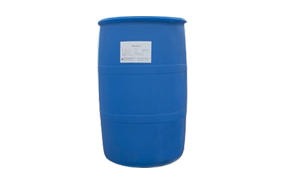Surfactants can be used for in-situ and ectopic remediation of organic contaminated soil. Ectopic remediation mainly refers to excavating the contaminated soil into an impermeable container, then removing the organic pollutants in the soil with surfactant, and continuously discharging the contaminated liquid from the soil. In situ remediation is carried out by spraying the surface of polluted areas and pumping out wells. Firstly, the surfactant extractant is sprayed on the surface of the contaminated soil. The extractant will percolate in the soil and transfer the pollutants to the polluted groundwater in the seepage area. Then, the polluted water body is pumped out by the extraction well and treated accordingly.

In the remediation of heavy metal contaminated soil, anionic surfactants are first adsorbed on the surface of soil particles and complexed with heavy metals to dissolve heavy metals in soil solution; Cationic surfactants transfer the cations in the soil to the liquid phase gradually through the exchange of ions themselves, so as to achieve the purpose of soil remediation; The efficiency of non-ionic surfactant in removing heavy metals from soil is relatively low because of its direct complexation with heavy metals.
The surfactant in tableware detergent does not directly enter the human body as an ingredient in drug or food formula, but only a little remains on the tableware surface, so the safety requirements of surfactant are slightly lower than those in drug or food. For some time, it criticized the carcinogenicity and teratogenicity of LAS, and even doubted its availability in washing powder formula, However, it ended due to the lack of sufficient evidence
AE (2) s or AE (3) s are common ingredients in tableware detergent, but the dioxane content should be strictly controlled at 50 × 10-6 or less, because dioxane has been proved to be one of the strong carcinogens, AES is no longer used in the relatively high-grade tableware detergent formula. Similarly, Diethanolamide is a commonly used foam stabilizer and thickener in tableware detergent, but the by-product formed by Diethanolamide cyclization has a strong tendency to form nitrosamine, Therefore, monoethanolamide or other surfactants tend to replace it, and Diethanolamide is gradually phased out in foreign high-grade tableware detergent formulations
In addition to the above toxicological factors, the surfactant for the new generation of tableware detergent also takes into account whether the contact with human skin during hand washing brings harm. According to the Kirk test results, immerse the hand in a certain concentration of surfactant solution for 1min, and measure the skin fat reduction rate of the hand epidermis. It is 25.3% in pure water, 50.1% in soap and 44.4% in ABS. Compared with pure water, Even mild soaps have high degreasing rate